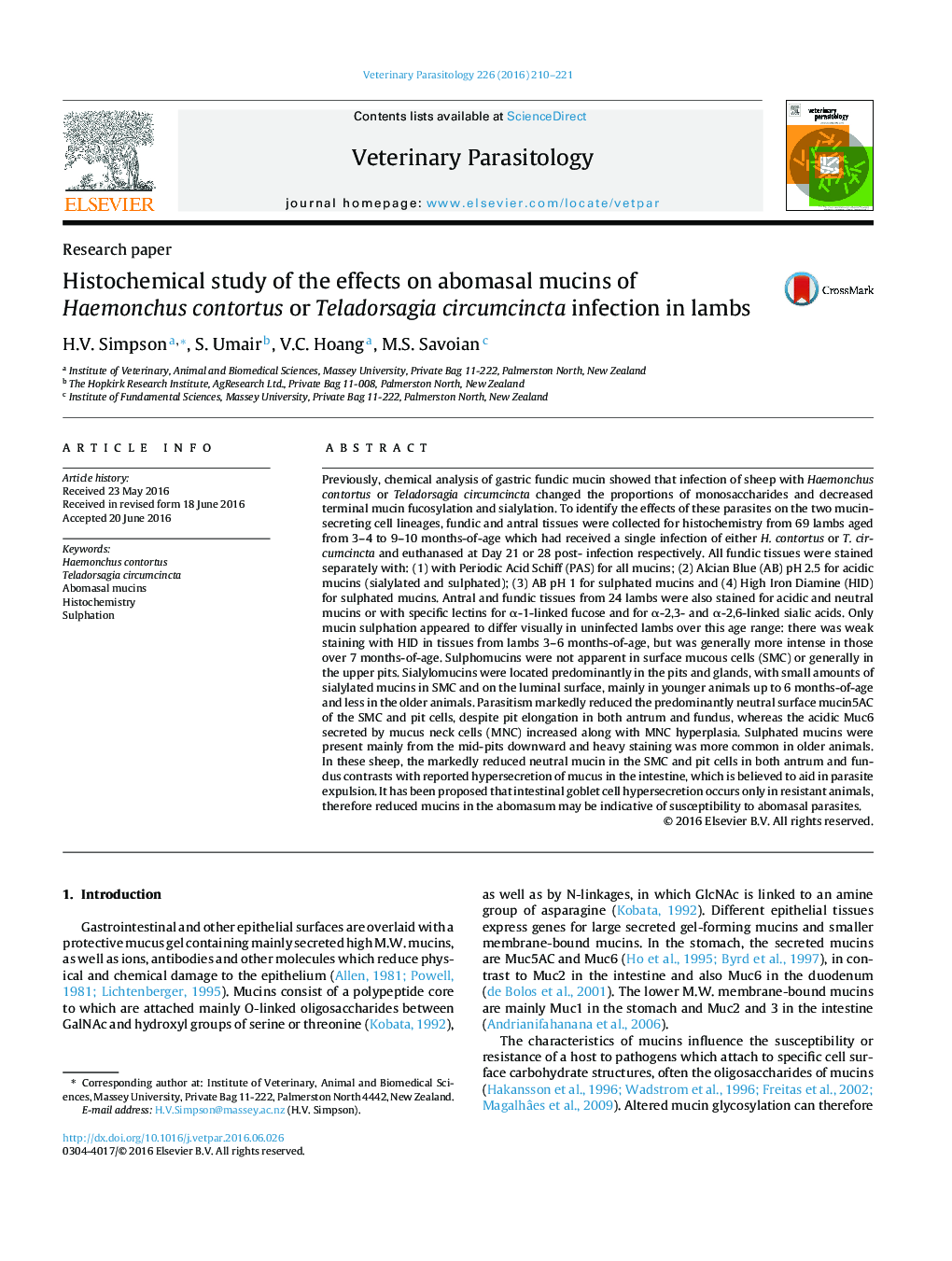| Article ID | Journal | Published Year | Pages | File Type |
|---|---|---|---|---|
| 5802034 | Veterinary Parasitology | 2016 | 12 Pages |
â¢Principal mucin in uninfected abomasum is Muc5AC in surface mucous cells and pit cells, with little Muc6 in mucous neck cells.â¢Both mucins fucosylated and sialylated, but only lower pit cell Muc5AC is sulphated.â¢More sulphomucins in older lambs.â¢Parasitism markedly reduces Muc5AC and increases Muc6.
Previously, chemical analysis of gastric fundic mucin showed that infection of sheep with Haemonchus contortus or Teladorsagia circumcincta changed the proportions of monosaccharides and decreased terminal mucin fucosylation and sialylation. To identify the effects of these parasites on the two mucin-secreting cell lineages, fundic and antral tissues were collected for histochemistry from 69 lambs aged from 3-4 to 9-10 months-of-age which had received a single infection of either H. contortus or T. circumcincta and euthanased at Day 21 or 28 post- infection respectively. All fundic tissues were stained separately with: (1) with Periodic Acid Schiff (PAS) for all mucins; (2) Alcian Blue (AB) pH 2.5 for acidic mucins (sialylated and sulphated); (3) AB pH 1 for sulphated mucins and (4) High Iron Diamine (HID) for sulphated mucins. Antral and fundic tissues from 24 lambs were also stained for acidic and neutral mucins or with specific lectins for α-1-linked fucose and for α-2,3- and α-2,6-linked sialic acids. Only mucin sulphation appeared to differ visually in uninfected lambs over this age range: there was weak staining with HID in tissues from lambs 3-6 months-of-age, but was generally more intense in those over 7 months-of-age. Sulphomucins were not apparent in surface mucous cells (SMC) or generally in the upper pits. Sialylomucins were located predominantly in the pits and glands, with small amounts of sialylated mucins in SMC and on the luminal surface, mainly in younger animals up to 6 months-of-age and less in the older animals. Parasitism markedly reduced the predominantly neutral surface mucin5AC of the SMC and pit cells, despite pit elongation in both antrum and fundus, whereas the acidic Muc6 secreted by mucus neck cells (MNC) increased along with MNC hyperplasia. Sulphated mucins were present mainly from the mid-pits downward and heavy staining was more common in older animals. In these sheep, the markedly reduced neutral mucin in the SMC and pit cells in both antrum and fundus contrasts with reported hypersecretion of mucus in the intestine, which is believed to aid in parasite expulsion. It has been proposed that intestinal goblet cell hypersecretion occurs only in resistant animals, therefore reduced mucins in the abomasum may be indicative of susceptibility to abomasal parasites.
Graphical abstractDownload full-size image
